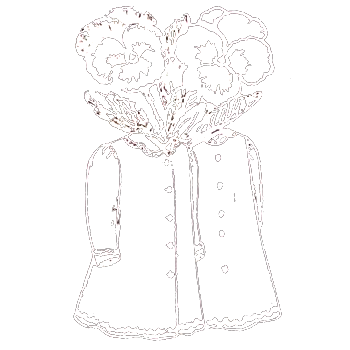TENDER OMNIBUS: Preface
I have a theory.
Today we see women poets everywhere. I heard Mei-Mei Berssenbrugge say once, “All the best poets are women.” She was saying she didn’t think gender was as much of an issue in today’s American poetry because the best poets are in fact all or mostly women. And yet, there is a disjunct between the beliefs of poetry communities and the official record.
This book, TENDER OMNIBUS, exists because if in 100 years someone looks back and says, “Well, there was Spicer, O’Hara and Ashbery...” I will just die.
When I look at the canon, the Whitmans and the Pounds and the William Carlos Williamses, and I read essays and theories which contain zero female historical examples, I think we’re in a system in which women weren’t allowed to be documented.
In the years since Edward Said’s Orientalism, much work has been done to examine the systems that produce and officiate literature. For example, Pascale Cassanova points out how all of the Western greats were published in either Paris or London, creating a very limited canon. Or, the Italian Renaissance where women writers were always present, even the most popular in salons, and while permitted to entertain and to fuck, they were not allowed to publish.
I believe women writers have existed at every moment throughout history. We can’t see them in the historical record because of (a lack of) “documentation” – the process of publishing and critical reviews and writing of histories: the process of canonization. I think it’s absolutely about process and nothing to do with existence or excellence.
It’s not some Neptunian-shrouded mystery how the Western canon got written: it was done by men. And they wrote it everywhere: “Men,” “All men,” “Mankind,” etc.
Without documentation women have not been allowed to compete for a chance at history, even a revised history. This creates a loop where our canons— our benchmarks for the possible— are missing at least half of their exemplaries.
I should say more than half because I’m only brushing the surface of “women” which can be understood as a freely-chosen archetype embodied by many souls in this world.
Without a proper history, how can we think about what poetry is? How can we say avant-garde isn’t a spoken-word poem that derives from an ingenious secret-code Underground Railroad song? How can we talk about “what’s modern” when what’s not white & male is barely in the conversation? And how can we look our daughters in the eye and say “sorry, there aren’t any books your color.”
Today erasure continues, albeit at a different angle, as we see year after year in VIDA Foundation statistics about which books are reviewed in major publications and which books are not.
Like the Italian Renaissance, although women are everywhere and everyone’s favorite poets today, nothing is guaranteed to make the historical record. Because men still dominate the writing of history, the reviews, the editorial boards, the newspapers and the publishing houses, the process of documentation could continue on just reading “mankind.”
Documentation is a labor we too often assume will be done by others, and assume will be permitted in ever-narrowing academic environments. Ask your friends, “Were you allowed to write a PhD on Bernadette Mayer?”
Google “John Ashbery” (half a million results). Then Google “Rosmarie Waldrop” (sixty thousand). “Harryette Mullen” (fifty thousand). It’s wrong and it matters.
I believe it is imperative that we as poets and writers offer up proof with our own hands, and then take it directly to those who write history at all levels: popular, unpopular, academic, official, non-official, unofficial, whatever.
We publish this OMNIBUS with the fierce intention to begin to alter the imbalance.
Love,
Katy Bohinc
Star Arkestress, Tender Buttons Press
New moon solar eclipse
March 8th, 2016
New York City
P.S. I very much hope you bring this book to the next galaxy.
P.P.S. I totally blame the monks.
Visit here for the
For more information on Katy Bohinc visit
